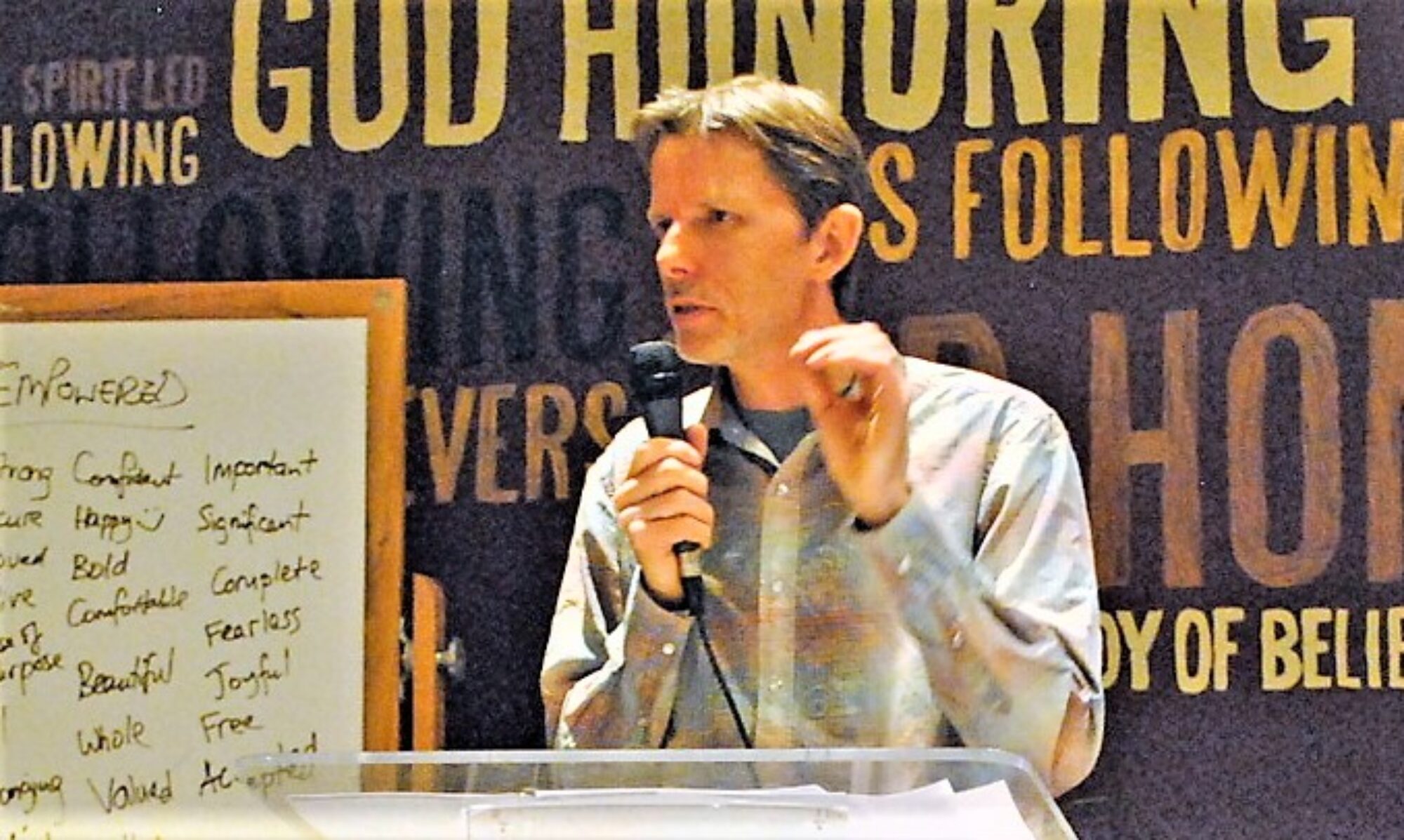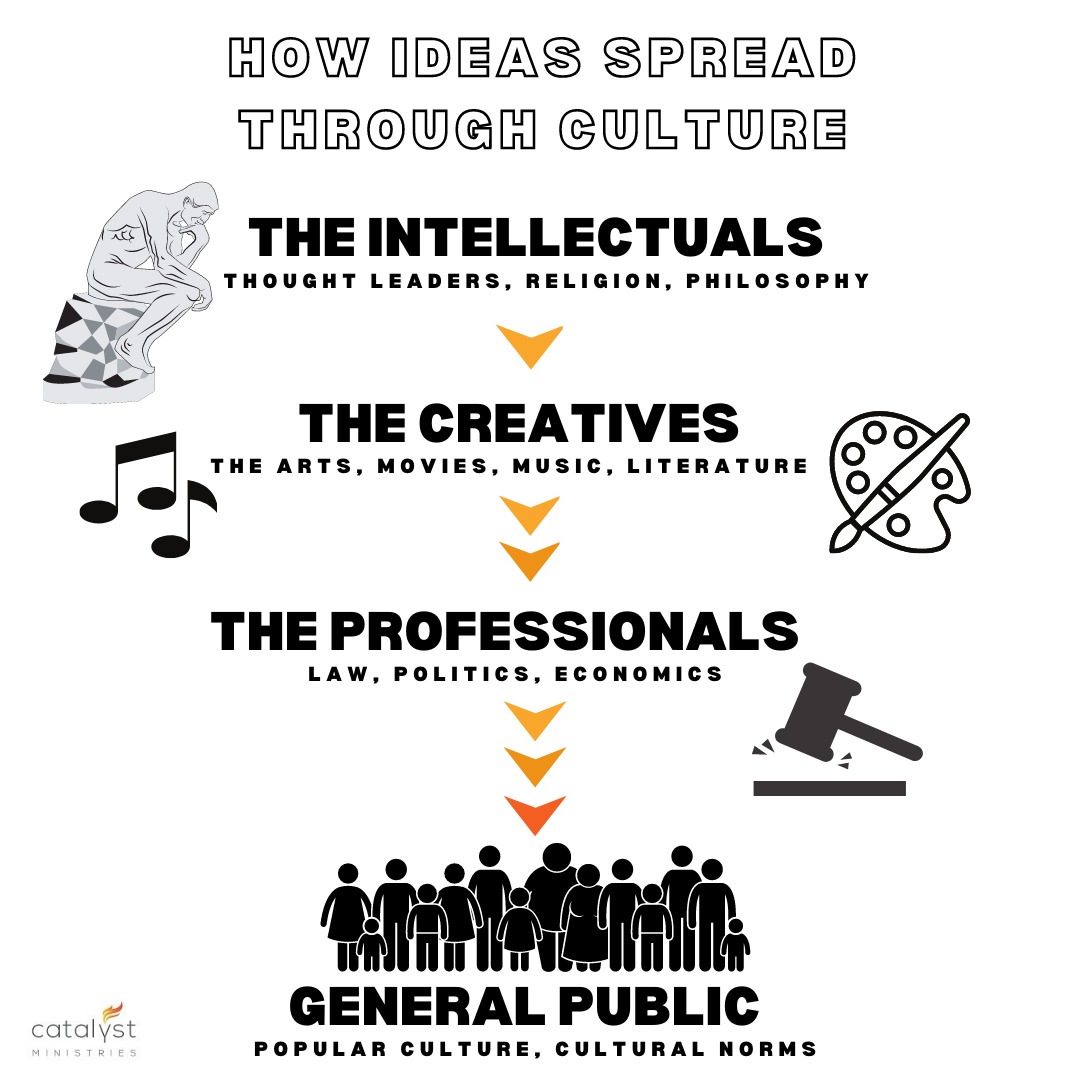In the blog, War of Ideas, I highlighted that this is a very important war that God’s people must not shy from. We must engage and shape the conversation on the key issues of life with biblical truth and a Kingdom worldview.
Most Christians are aware of the battle of the mind going on in their own heads. Few believers recognise the strategic battles that are taking place between the kingdom of darkness and the Kingdom of Light at a much higher level – within the corporate ‘minds’ of their nations.
If we are to disciple and educate nations, bringing the Kingdom of Heaven to Earth (Mt. 6:10; 28:18-20), then we must understand how ideas and ideologies spread through societies, nations and the world.
Ideas spread into societies and shape the very values and worldview by which these societies function. Ideas can spread and travel in different ways.
Horizontal Movement
Beginning with an individual, ideas are passed onto others who share the message to a community, to a nation, and ultimately around the world.
Jesus told his disciples to be his witnesses in Jerusalem, in all Judea and Samaria, and to the ends of the earth. In the first century this gospel message spread east as far as India (possibly even into southern China), south into Mediterranean Africa, west as far as Spain, and perhaps as far north as the British Isles.
After the initial missions thrust, ships carried the gospel along the coasts to the world’s port cities. It was then taken inland through mission societies such as the China Inland Mission and the Africa Interior Mission. In more recent times it has been taken to previously unreached ethnic and tribal peoples.
Generationally through time
When God initiated his plan of redemption and restoration, we see him working through the generations, beginning with Abraham. First generation people pioneer and catalyse a new initiative. This involves many challenges and involves a high degree of risk requiring faith and perseverance.
Abraham had to leave his place of comfort and familiarity and set out on an unknown journey. He was responsible for passing on the vision to successive generations so that it would continue beyond his lifetime.
Second generation people extend and establish the work of the first generation pioneers. Joshua took the people that Moses (1st Gen) had led out of Egypt, into the Promised Land. Solomon took the baton from his father, King David (1st Gen), and built a temple. The first generation of disciples took the gospel of the Kingdom into new places and to new peoples, beyond the regions where Jesus had ministered.
Although not an exact science, it usually takes three to four generations for a new idea or concept to be established.
John Wesley said, ‘What one generation tolerates, the next generation will embrace’. In the past it took a period of time for ideas to travel around the world and penetrate cultures. With rapid technological change, this time lag has shortened significantly as the Internet can allow ideas to spread instantly around the globe.
Vertical Movement
It has been said that if you want to know how members of the next generation will order their lives, listen to contemporary music and go to a museum of modern art. The arts carry ideas and worldviews through the culture.
As the diagram clearly illustrates, ideas usually develop as religious doctrine, philosophical abstractions, or scientific theories (by the INTELLECTUALS, ‘thought leaders’) and are then transmitted downward via music and the arts (by the CREATIVES, musicians, poets and writers). The ideas then become institutionalised in a society’s laws, politics, and social and economic structures (by the PROFESSIONAL classes, e.g. teachers, lawyers, politicians, journalists, pastors), before flowing to popular culture and affecting the behaviour and lifestyle of the average citizen (GENERAL PUBLIC). At this point the ideas become cultural norms.
This is how ideas penetrate deep into every sphere of life, shaping the values, social structures, and institutions of a culture.
Engaging in the Vertical Movement of Ideas
Whereas the Church has understood the horizontal spread of ideas, it has not understood so well how ideas spread vertically through penetrating and shaping a culture.
However, to disciple nations it is imperative that the Church understands how to spread biblical truth and ideas and worldview into society and culture.
The embracing of a biblical worldview has the potential to transform the lives of individuals and whole societies and cultures. It cannot be imposed on people but it should be proclaimed and demonstrated in love and in the power of the Holy Spirit.
We don’t need ‘intellectuals’ in their ivory towers to systematically deconstruct biblical truth and challenge God’s ways for society to flourish. The evidence over recent decades shows clearly the rotten fruit that has been produced from atheistic and humanistic philosophies that were given birth in the university and have gradually spread down the chain to the masses.
Silent Observer or Vocal Communicator?
This spread and movement of ideas is happening all the time. The Church as a whole has largely been a silent observer, as it has witnessed from the sidelines the gradual rejection of many biblical ideas and values that made some nations strong.
It is high time for the Church to wake up to what is happening and push back! Those gifted in the arts (who sadly have often been marginalised within Christian circles) should be encouraged to take God’s plans (ideas) for mankind and speak prophetically into society.
We are not called to hunker down and wait for Jesus to come and rescue us from the increasing darkness. No! We are to arise and shine as children of the light! King Jesus has commissioned us to spread the good news that his Kingdom has come. What are we waiting for?


